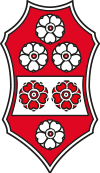- Home
- Our Learning
- Our Curriculum
- English and Communication
- Phonics at St Barnabas Primary School
- Introduction to the Twinkl Phonic Scheme
Introduction to the Twinkl Phonic Scheme

At St Barnabas CE Primary School we use the Twinkl synthetic phonic teaching programme. This is broken down into six phases:
- Level 1 – Nursery and first term of Reception
- Level 2 – Reception
- Level 3 - Reception
- Level 4 - Reception/ Autumn term Year 1
- Level 5 - Year 1
- Level 6- Year 2
Throughout the six phases children will be taught the 44 phonemes. It is important to remember that there are alternative spellings to these graphemes.
There are six levels in which the children are introduced to all 44 phonemes and corresponding graphemes starting with the most familiar grapheme for each phoneme first.
Synthetic phonics starts with ‘phonemic awareness” which is hearing the different sounds in a word and the matching of these phonemes to single letters. At the same time it shows how these phonemes (sounds) can be 'blended' to produce words and the words can be ‘segmented’ to write.. Your child will learn simple letter to sound correspondence. This is when a phoneme is represented by a single letter as in the word /c/ /a/ /t/.
When that’s mastered your child will learn that sometimes one phoneme is represented by two letters (digraph); as in the word /ch/ /o/ /p/ ; where /ch/ is only one phoneme (sound).
Then after that, even though at first it may sound confusing, your child will learn that sometimes a single phoneme can be represented in many ways. Like the sound /ay/ in play.
Your child will eventually learn that this phoneme can be written;
/ay/ as in the word play
/a-e/ as in the word spade
/ea/ as in the word break
/ey/ as in the word hey
/eigh/ as in the word eight
/a/ as in the word later
/ei/ as in the word vein
Finally your child will learn that sometimes a single (or more) letter may represent more than one phoneme; for example, the ‘o’ in /most/ and the ‘o’ in /hot/ or the ‘ow’
in /wow/ and the ‘ow’ in /tow/.
This can be confusing but with the structure and regularity of letters and sounds almost all children will pick this up.
What do all these technical words mean?
What is a phoneme?
It is the smallest unit of sound and a piece of terminology that children like to use and should be taught. At first it will equate with a letter sound but later on will include the digraphs.
What is a digraph?
This is when two or more letters come together to make a phoneme. /oa/ makes the sound in boat.
What is blending?
Blending is the process that is involved in bringing the sounds together to make a word or a syllable and is how /c/ /a/ /t / becomes cat.
What is a consonant blend?
Previously, consonant blends were taught as if there was something special about them. Children were taught that /st/ was one phoneme, when actually it is two, /s/ and /t/. Think about it. Why teach /st/ when children already know /s/ and /t/, it just wastes time and clogs up children’s memory. But note that sh is a diagraph. It cannot be made by a process of blending the two letter sounds of /s/ and /h/ together. We need to teach the digraphs not the blends.
